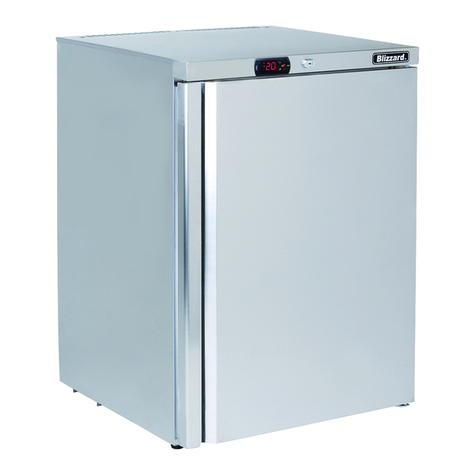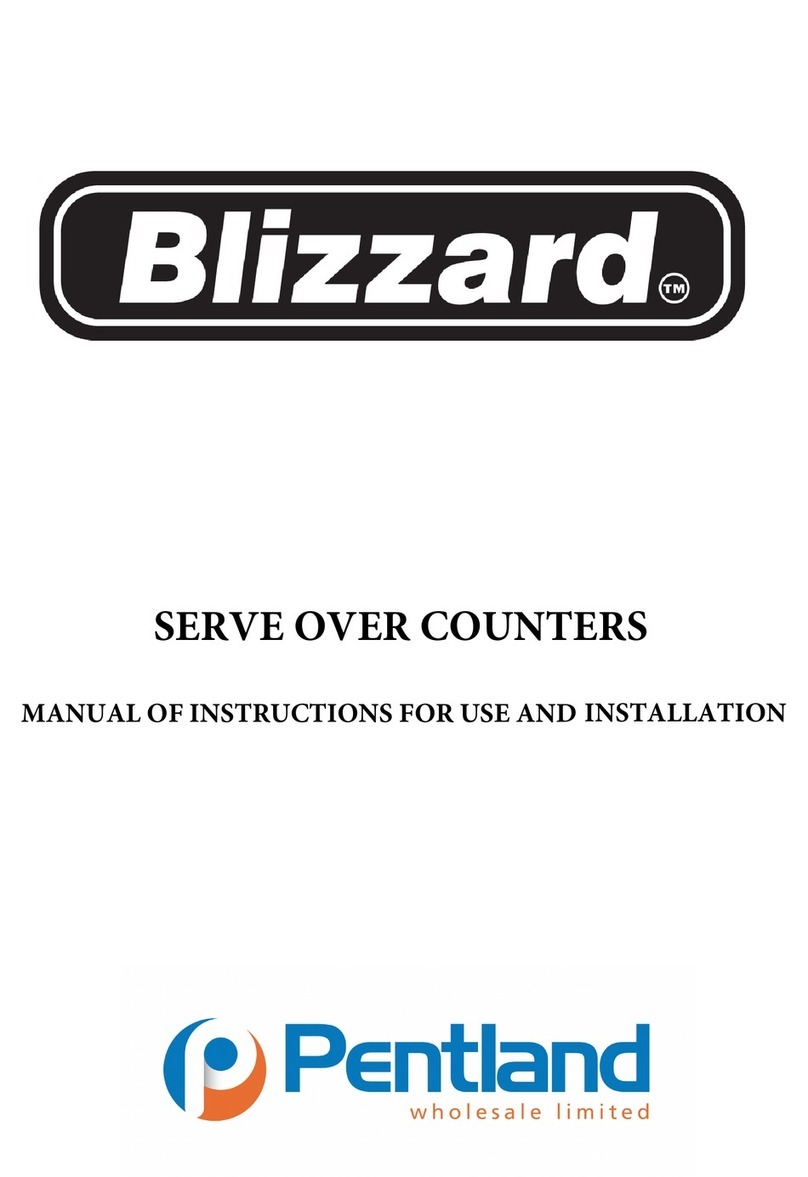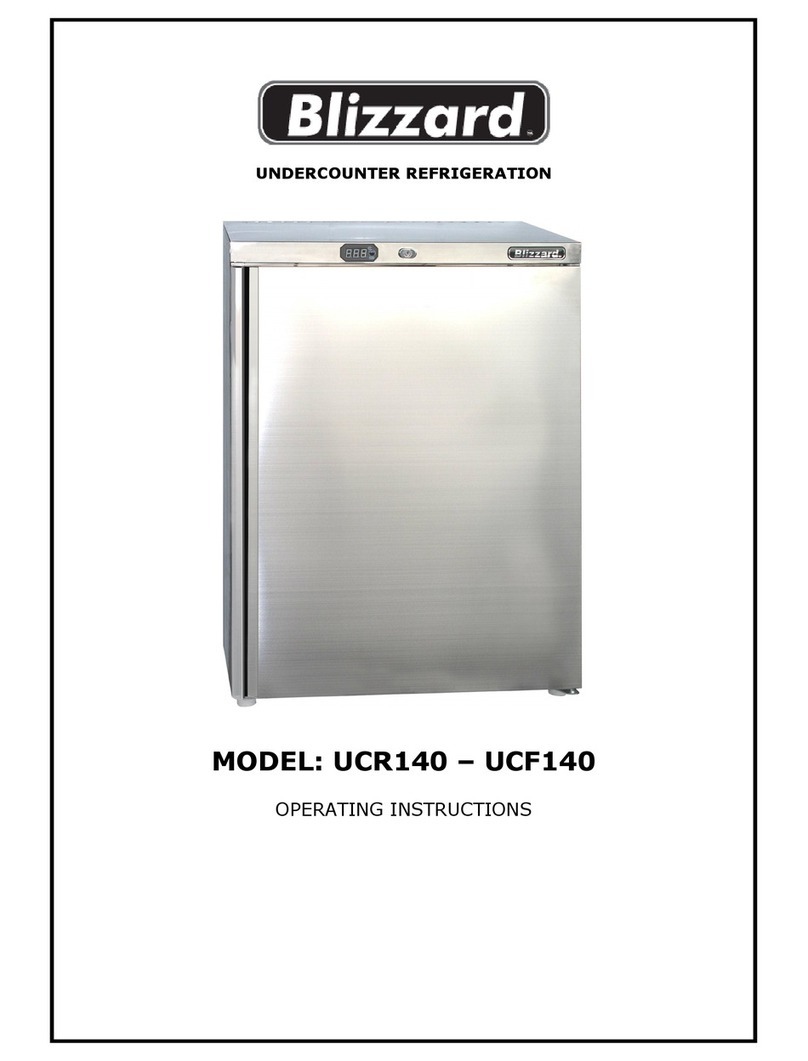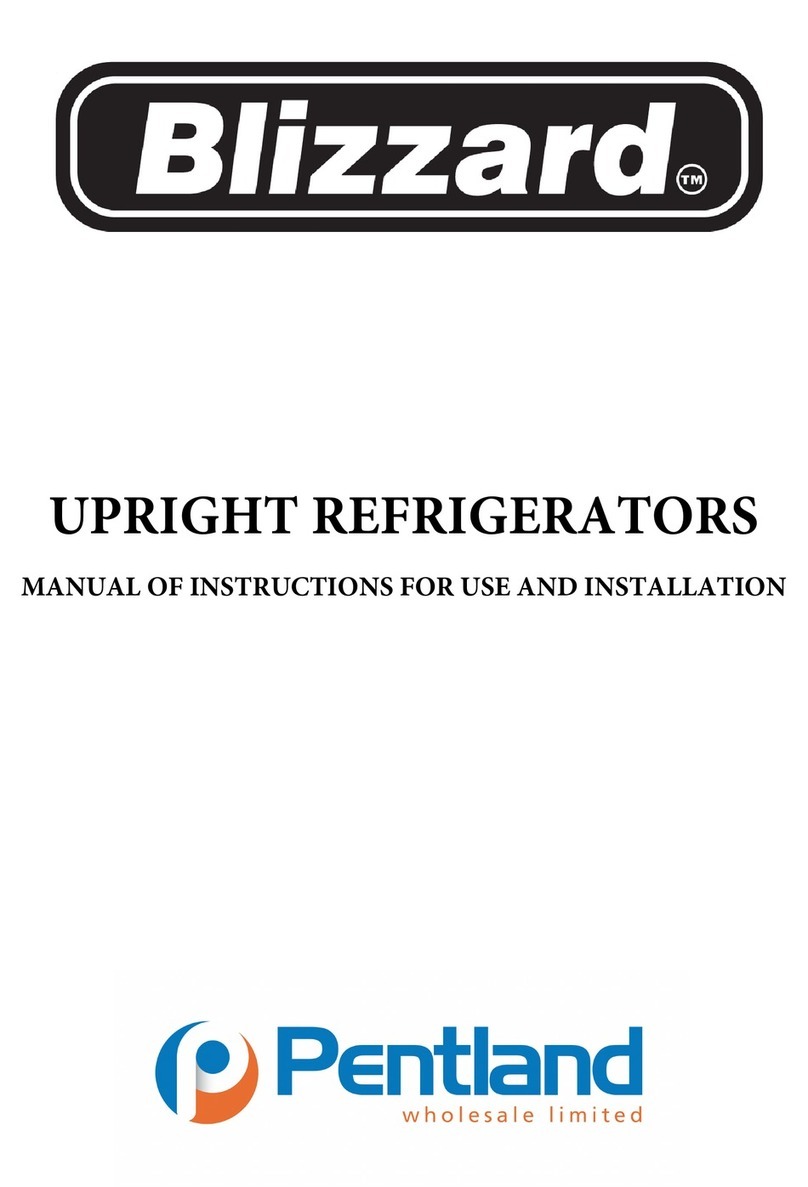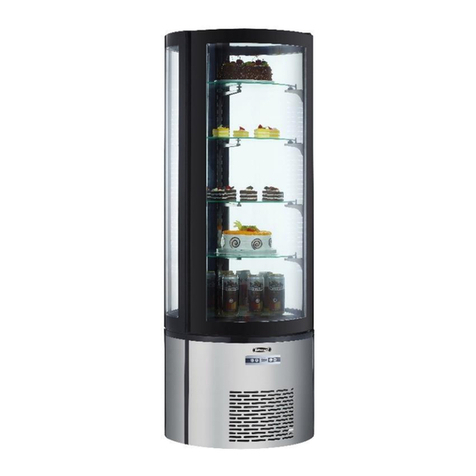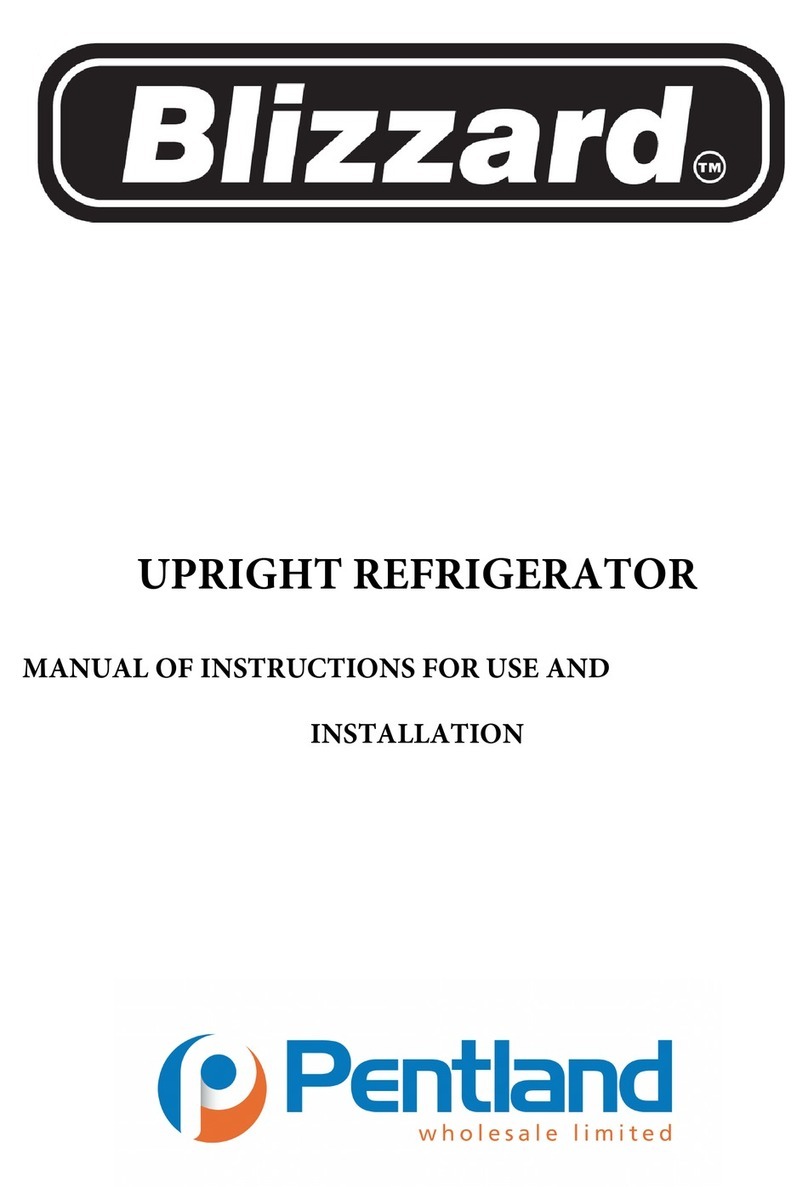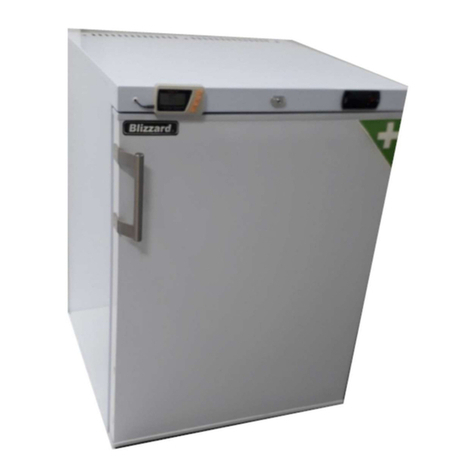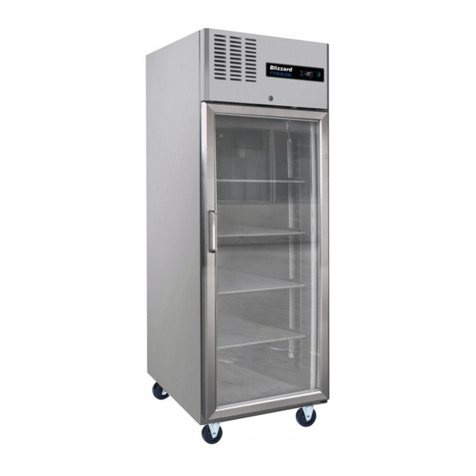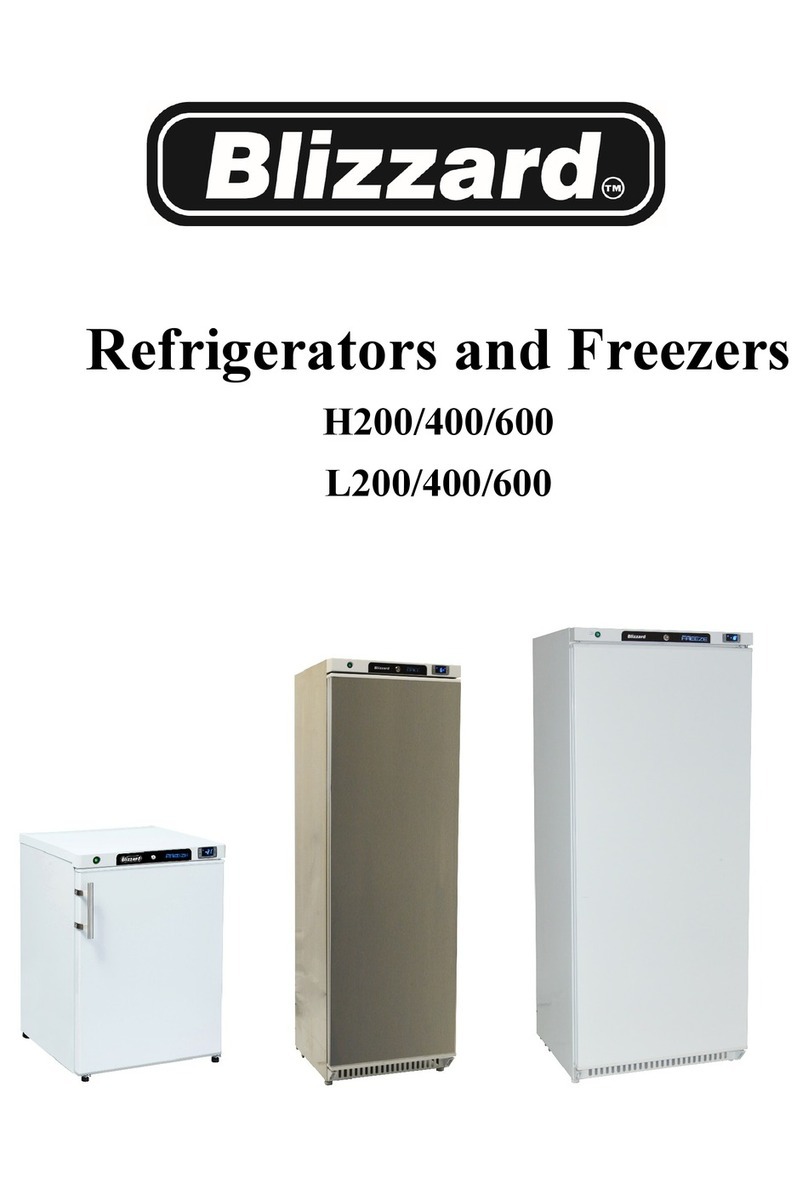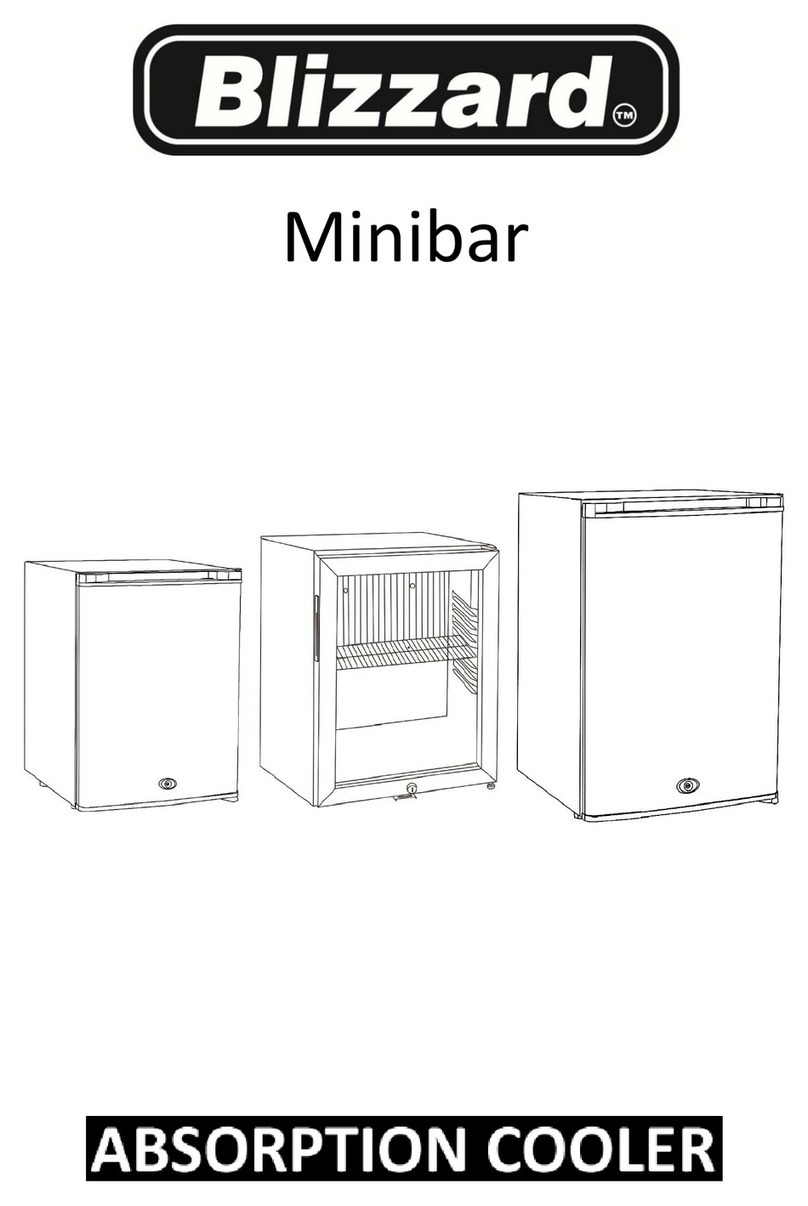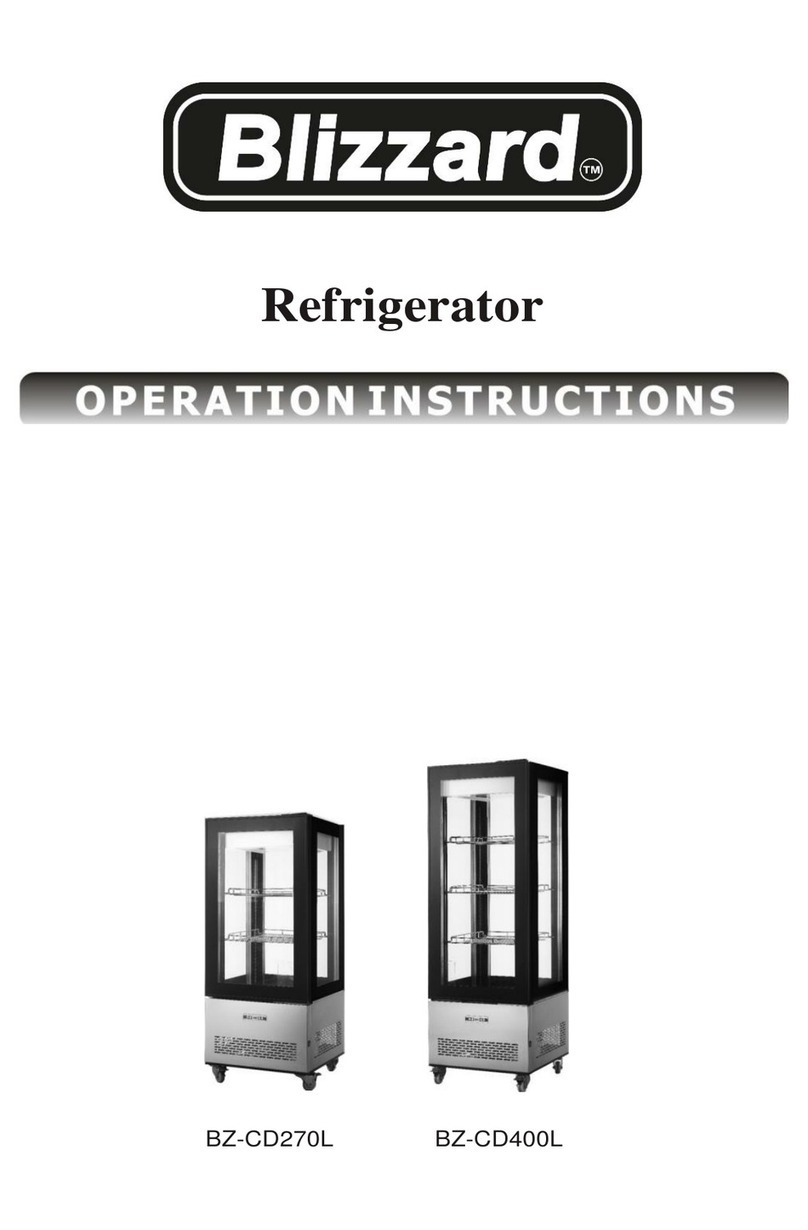INSTALLATION/ OPERATION
IMPORTANT!!! PLEASE READ BEFORE INSTALLATION
■If the unit has recently been transported please let unit stand still for a minimum of 24
hours before plugging it in.
■Make Ensure all the protective film / adhesive is removed along with packaging
■Make sure that the unit drops down to desired temperature before loading the unit
with product.
■Make sure that there is proper ventilation around the unit in the area where it will
operate.
■Make sure all accessories are installed (i.e. shelves, shelf clips, casters) before
plugging the unit in.
■Please read through the manual in its entirety.
CABINET LOCATION GUIDELINES
■Install the unit on strong and leveled surfaces
-unit may make unpleasant noises if surface is uneven
-unit may malfunction if surface is uneven
-Unlevel surfaces can cause the cabinet to twist and affect the door alignment
■Install the unit in an indoor, well-ventilated area
-unit performs more efficiently in a well-ventilated area
-for best performance, please maintain clearance of 100 mm on the back of the unit
-Ensure the ambient temperature is between 16 degrees C and 30 degrees C
■Avoid installation in a high humidity and/or dusty area
-humidity could cause unit to rust and decrease efficiency of the unit
-dust collected on condenser coil will cause unit to malfunction. Clean the condenser
at least once a month with a brush or clean cloth
-malfunction due to dirty condenser will void warranty
■Select a location away from heat and moisture-generating equipment
-high ambient temperatures will cause the compressor to overwork, leading to higher
energy bills and gradual breakdown of the unit
-malfunction due to high ambient temperature will void warranty
